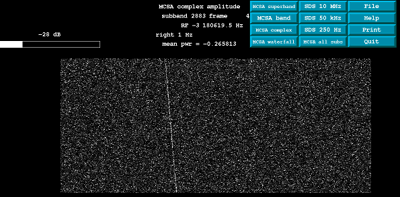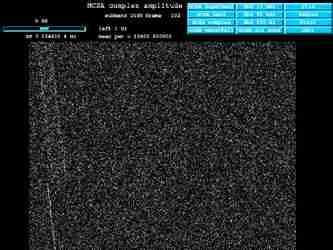A Signal from Beyond the Solar System
Testing the System
The Project Phoenix system is designed to detect faint communication signals coming from light years away while rejecting the cacophany of terrestrial communications. How do we know the system works?
Ideally we'd like a "standard ETI signal" for calibrating our sensitivity and checking that all of the electronics and software at both the primary and verification sites are working properly. Unfortunately, until we make the discovery, we don't have such a signal.
Fortunately, we have something that provides a pretty good approximation to an ETI signal.
Pioneer 10
The Pioneer 10 spacecraft was launched in 1972. After sending back the first close-up pictures of Jupiter and Saturn, it has continued traveling through and beyond our Solar System. Now at a distance of more than 6 billion miles (10,000 million kilometers), and broadcasting with a power of a few watts (a small flashlight), it provides an excellent test for the Phoenix System.
The Signal from Pioneer 10
Unlike most radio astronomy experiments, Project Phoenix does not compensate for the motion of the Earth during its observations. This means that most ground-based transmitters will appear to have a constant frequency, much like the test signal shown above. Signals from deep space will show a drift in frequency due to the changing relative velocity between the transmitter (perhaps on a spacecraft or another planet) and the radio telescope on the Earth.
An example of such a signal, from the Pioneer 10 spacecraft is shown below.

During a subsequent observation, we switched the computer display to show one of the "side bands" where Pioneer 10 transmits data. In the image below, the lower portion of the waterfall plot shows a part (643 Hz) of the spectrum containing the carrier signal. The upper two thirds of the plot shows a different part of the spectrum containing the data signal.

